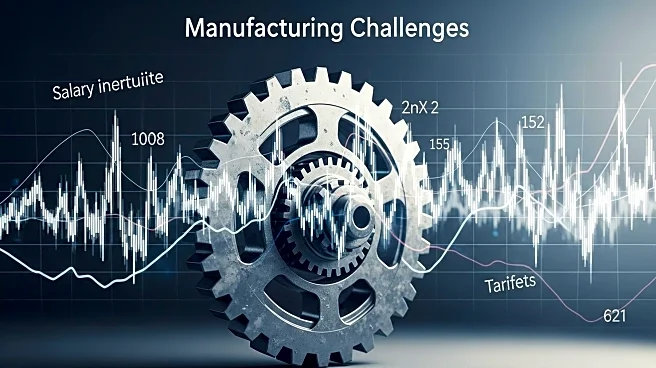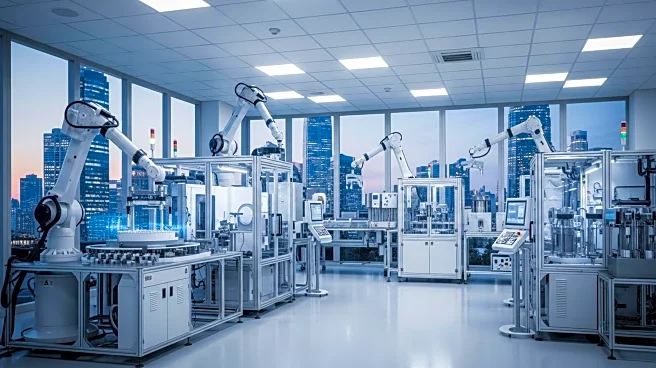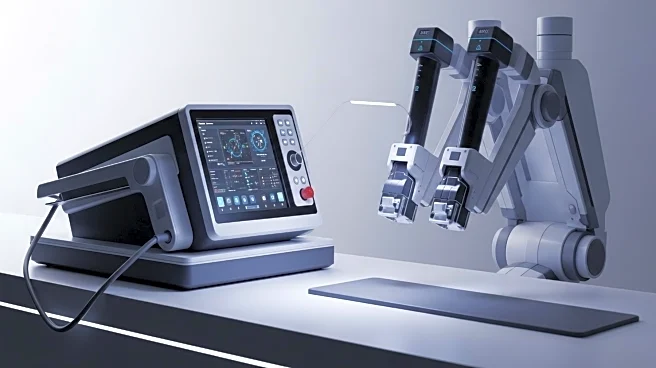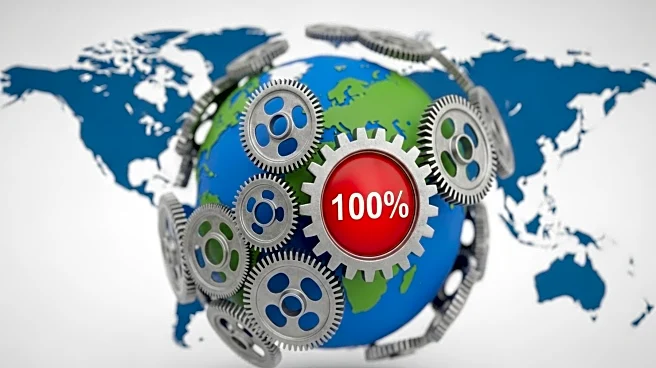What is the story about?
What's Happening?
IndustryWeek's latest review highlights several pressing issues affecting the manufacturing sector. A key focus is on the unintended consequences of President Trump's tariff plan, which has reportedly undermined the sectors it was intended to protect. Additionally, the review notes that many companies are planning only small salary increases for 2026 due to ongoing economic uncertainty. This uncertainty is reflected in a survey by Endeavor Business Intelligence, where about 20% of respondents remain unsure about their salary budgets for the next year. The review also discusses increased immigration enforcement, a new tax provision benefiting manufacturers, and the challenges facing the additive manufacturing sector.
Why It's Important?
The issues highlighted in IndustryWeek's review have significant implications for the U.S. manufacturing industry. The unintended consequences of tariffs could lead to increased costs and supply chain disruptions, affecting competitiveness and profitability. The economic uncertainty and modest salary increases could impact workforce morale and retention, potentially leading to a talent shortage in the sector. Increased immigration enforcement may pose additional challenges for manufacturers relying on immigrant labor. Meanwhile, the new tax provision could provide financial relief to companies investing in production facilities, encouraging domestic manufacturing growth. These developments collectively underscore the complex landscape manufacturers must navigate.
What's Next?
Manufacturers may need to reassess their strategies in response to these challenges. Companies might explore alternative supply chain solutions to mitigate tariff impacts and consider innovative compensation strategies to retain talent amid economic uncertainty. The increased immigration enforcement could prompt businesses to review their compliance practices. Additionally, the new tax provision offers an opportunity for manufacturers to invest in infrastructure, potentially leading to increased production capacity. Stakeholders in the additive manufacturing sector may need to focus on practical applications to achieve profitability. These steps could help the industry adapt to the evolving economic and regulatory environment.
AI Generated Content
Do you find this article useful?














